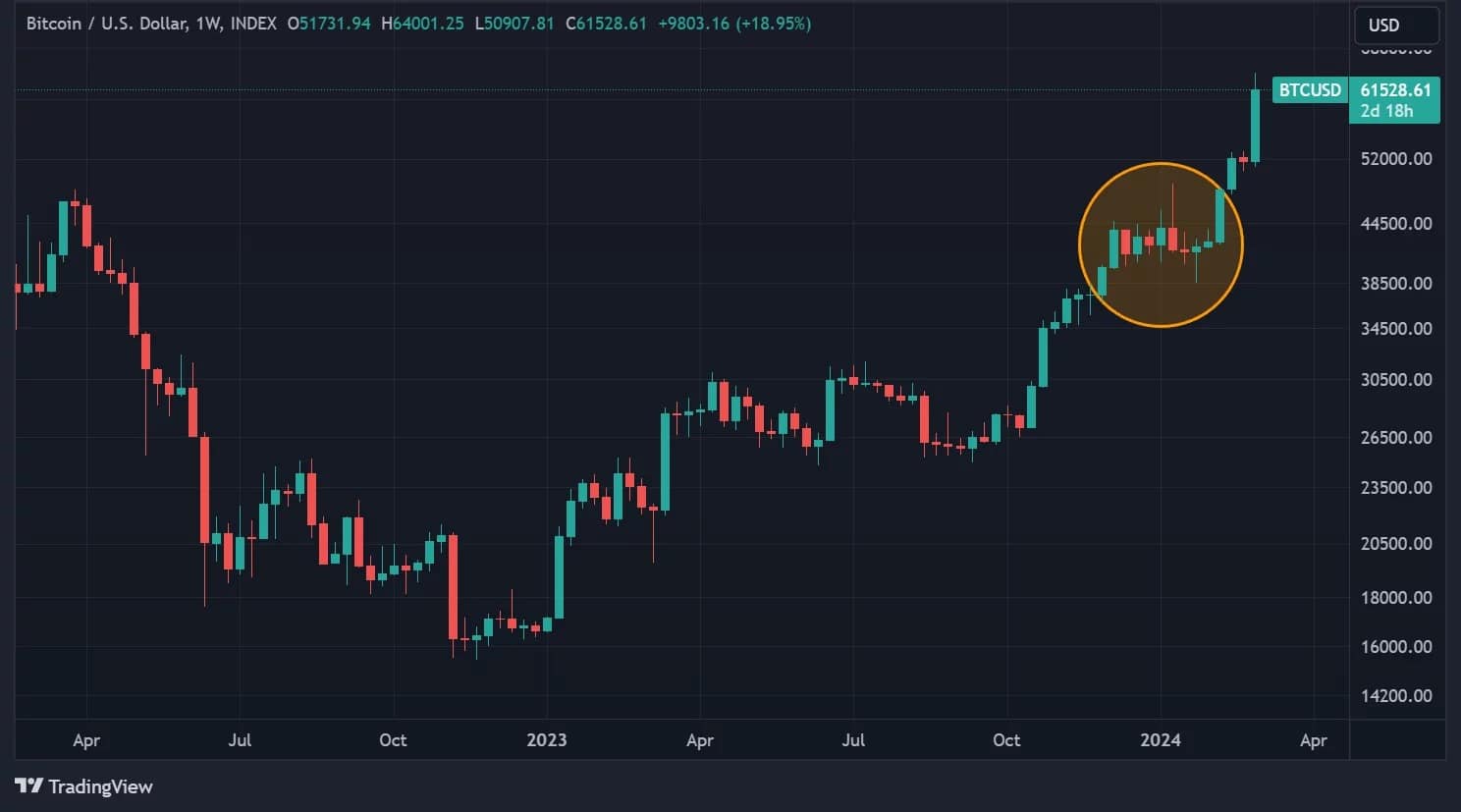According to JP Morgan’s latest Bitcoin research report, the price of BTC could fall to $42,000 following halving. What’s driving analysts to consider this price target?
For JP Morgan, Bitcoin (BTC) could fall to $42,000 after the halving
While the price of Bitcoin (BTC) has been rising steadily in recent weeks, with one positive prediction following another, analysts at JP Morgan have taken the opposite view, publishing a rather nuanced research report.
And with good reason: the report indicates that the forthcoming halving will have a negative effect on prices, and could even cause BTC to fall as far as the $42,000 mark.
Just as with positive price targets, where the aim is to gain height, the same will be true here.
However, it is indeed prudent to consider a correction after such a rise, and it’s likely that the $42,000 zone could provide solid support, given that BTC’s short has plateaued there for almost 2 months:

BTC price in weekly data
As for previous halvings, we have observed the following behavior:
- November 28, 2012: the BTC price stagnated until the following January before exploding upwards;
- July 9, 2016: BTC was trading around $680. The price fell to $470 in the first week of August before recovering to stagnate until October and then start its rally in October;
- 11 May 2020: a range was built up until mid-July before a timid rise, but the rally really began in October.
Past histories thus remain rather heterogeneous over a very short time horizon, although in the months that followed, Bitcoin always saw its price appreciate.
What are JP Morgan’s arguments?
To justify its downward scenario, JP Morgan relies primarily on the rise in miners’ production costs, a mechanical consequence of halving, which will divide block rewards by 2. Estimated today at $26,500, the cost of producing one BTC would then rise to $53,000.
However, the analysis argues that this drop in profitability will lead smaller miners to unplug their machines, resulting in a drop in computing power deployed on the network :
“Secondly, as Bitcoin mining becomes more energy-intensive after April, some private miners with less efficient machine fleets and limited access to capital will leave the market as their cost of production exceeds profitability, driving hashrate down by around 20%. “
These estimates bring us back to an estimated production cost of around $42,000, which is also JP Morgan’s price target. In practice, however, it’s difficult to predict how hashrate will be affected after halving.
In any case, as the halving is due to take place on April 19, we won’t have to wait long for some answers.
